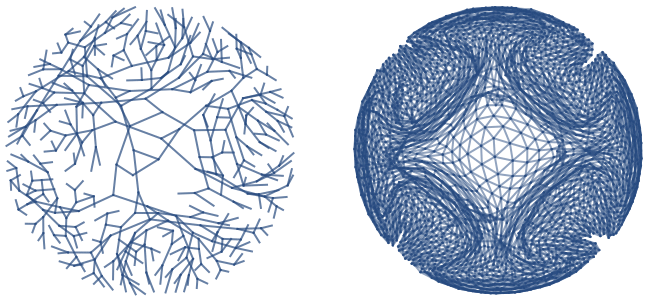"GravityEmbedding" (Graph Layout Method)
"GravityEmbedding" (Graph Layout Method)
- Vertex layout for GraphLayout.
- Use gravity embedding to lay out vertices of a graph.
Details & Suboptions
- The gravity embedding is a graph-drawing technique to position vertices of a graph so that they minimize mechanical, electrical and gravitational energy when each vertex has a charge and a mass and each edge corresponds to a spring.
- The gravity embedding is typically used to lay out large, complex graphs with a root vertex.
- Vertices can be embedded in
 .
. - The following model parameters can be given:
-
"RepulsiveForcePower" repulsive force constant 
"SpringConstant" spring constant 
- The following graph parameters can be given:
-
"RootVertex" root vertex - Possible settings to control the energy minimization process include:
-
"EnergyControl" how the energy function is controlled during minimization "InferentialDistance" cutoff distance for inference from faraway vertices "MaxIterations" maximum number of iterations "RandomSeed" seed for the random generator for initial vertex placement "StepControl" how step lengths are modified during energy minimization "StepLength" initial step length used in moving the vertices "Tolerance" tolerance used in terminating the process - Possible settings to control the layout include:
-
"Rotation" Automatic layout rotation
